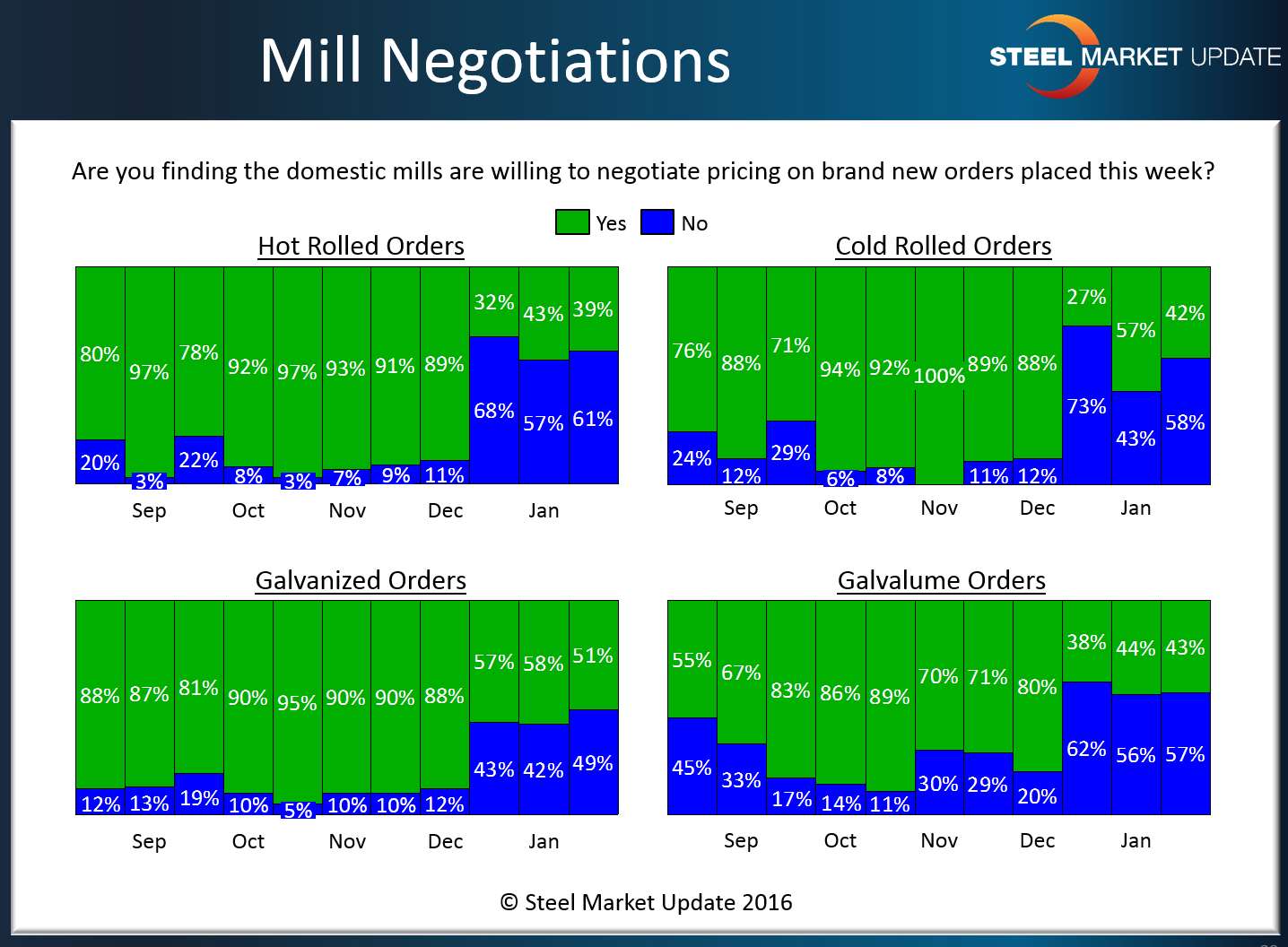SMU Data and Models

Steel Mills Less Willing to Negotiate Flat Rolled Pricing
Written by John Packard
January 21, 2016
As lead times move out (see article above) we traditionally find the mills less willing to negotiate flat rolled steel prices. We asked those taking our mid-January flat rolled steel market survey to provide us information regarding the willingness of the U.S. steel mills to discount or negotiate steel prices.
Hot rolled, which has been the weakest of the flat rolled steel products, found 39 percent of those responding to our questionnaire as indicating the mills as willing to negotiate HRC pricing. This is down from the high 80-97 percent range we had been collecting from our surveys in September, October, November and December 2015.
Cold rolled results were similar at 42 percent reporting the mills as willing to negotiate.
Slightly more than half (51 percent) of the respondents reported the mills as willing to negotiate galvanized pricing while 43 percent reported the mills as willing to negotiate Galvalume pricing.
As you can see from the graphic below, the negotiation trend was broken right after the domestic mills began announcing price increases at the beginning of December 2015.
A side note: The data for both lead times and negotiations comes from only service center and manufacturer respondents. We do not include commentary from the steel mills, trading companies or toll processors in this particular group of questions.
To see an interactive history of our Steel Mill Negotiations data, visit our website here.

John Packard
Read more from John PackardLatest in SMU Data and Models

SMU’s June at a glance
A look at SMU data for the month of June.

SMU Survey: Buyers’ Sentiment rebounds from multi-year low
Both of SMU’s Steel Buyers’ Sentiment Indices edged higher this week. Current Sentiment rebounded from a near five-year low, while Future Sentiment rose to a two-month high

SMU flat-rolled market survey results now available
SMU’s latest steel buyers market survey results are now available on our website to all premium members.

SMU Survey: Sheet lead times pull back after early-June blip, plate holds
Following the uptick seen two weeks ago, lead times eased this week for all four sheet products tracked by SMU, while plate lead times held steady, according to this week’s market survey.

SMU Survey: Pricing power abruptly shifts to steel buyers
The majority of steel buyers responding to our latest market survey say domestic mills are more willing to talk price on sheet and plate products than they were earlier this month. Sheet negotiation rates rebounded across the board compared to early June, while our plate negotiation rate hit a full 100%.

